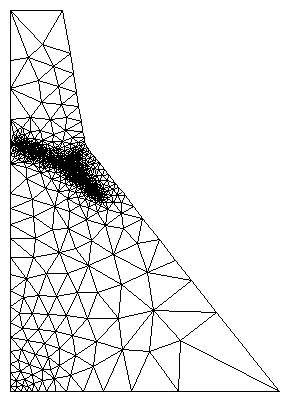
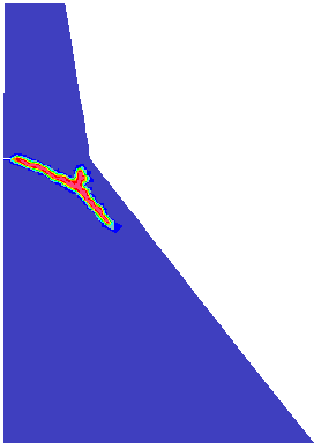
M. Jirásek and T. Zimmermann:
Analysis of the rotating crack model
Journal of Engineering Mechanics ASCE, 124 (1998), 842-851.
M. Jirásek and T. Zimmermann:
Rotating crack model with transition to scalar
damage
Journal of Engineering Mechanics ASCE, 124 (1998), 277-284.
M. Jirásek:
Nonlocal models for damage and fracture: Comparison
of approaches
International Journal of Solids and Structures, 35 (1998), 4133-4145.
There exists also an internal report that contains unpublished details on the mesh-adaptive procedure. The meshes have been generated using Targe2, a mesh generator based on the advancing front technique and created by Petr Krysl.
Plane strain analysis of a gravity dam (Koyna Dam) with a preexisting crack loaded by full reservoir water pressure plus additional pressure due to overflow:
Click on the left figure if you want see a sequence of meshes generated by a pseudo-adaptive procedure. By clicking on the right figure you can start a crack propagation video.
Plane-stress analysis of a double-edge notched specimen loaded by a combination of tension and shear:
Three-dimensional analysis of an unnotched beam subjected to three-point bending. This simulation has been run on a mesh consisting of 13,000 tetrahedral elements using the nonlocal version of the RC-SD model.
The figures below illustrate the transition from the initial diffuse damage pattern to the final highly localized one. Black lines correspond to opening cracks and white lines to closing cracks. Colors indicate various levels of cracking strain. You may also look at an animated sequence.
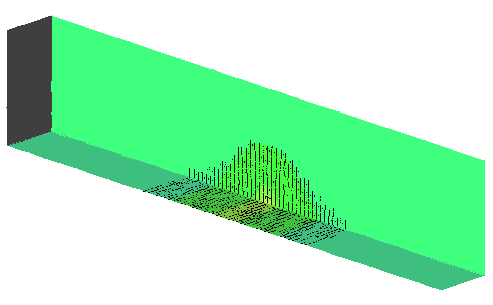 |
Initial diffuse crack pattern |
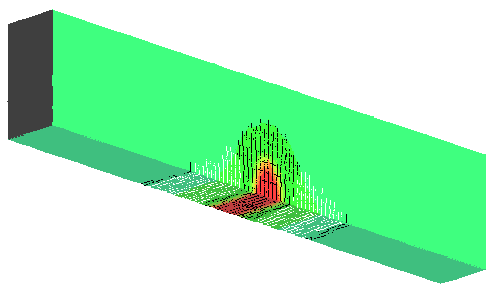 |
Onset of localization |
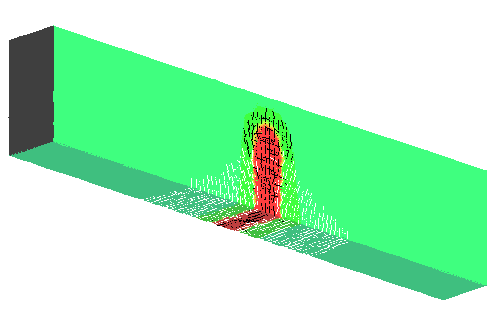 |
Growth of the localized zone |
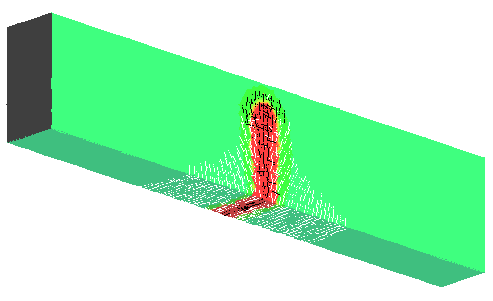 |
Final localized crack pattern |